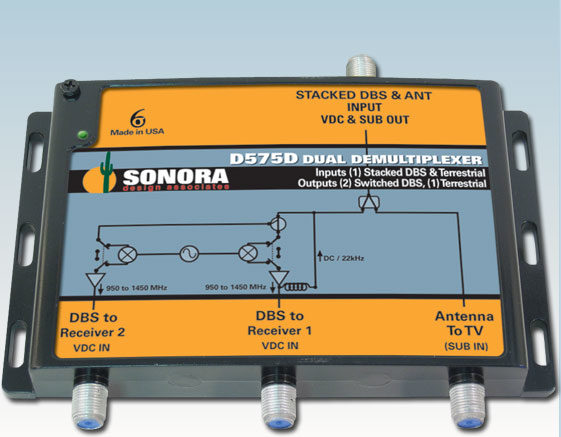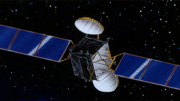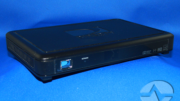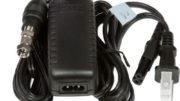No one talks much about destackers anymore. There’s a good reason for that. Destackers aren’t used with DIRECTV equipment made after about 2006. So, if you’re looking for a destacker, your goal is to try to make 15-year-old DIRECTV equipment work for you for a bit longer.
What did a destacker do?
In the early days of satellite TV, stackers were fairly common. DIRECTV satellite dishes of that day used two different kinds of signals, unlike the four or six different ones used today. Stacking was an early attempt to let you use one cable with both kinds of signals, as well as with antenna signals. This was important because until about 2000, DIRECTV did not carry local stations in most markets.
You used a device called a stacker to make this work. The stacker took the two different satellite signals and moved their frequencies so they could coexist on the same cable. Stackers today are hard to find since they haven’t been made in years. But, some older marine satellite systems were built with stackers as part of the system. If you have one of those systems, you’ll need a destacker to use it at all.
How did a destacker work?
This diagram can help you make sense of it.
Different kinds of signals use different frequencies. Antenna TV, for example, uses frequencies that traditional satellite TV doesn’t use. So in older systems it was common to put antenna signals on the same line as the satellite signal. (Newer systems don’t allow this.)
However, the range used for traditional satellite TV can only accommodate half the signals. This is a system that’s used all over the world and DIRECTV didn’t invent it. It’s common to have either the “odd” or “even” signals use the frequency range from 950-2150MHz. The satellite receiver chooses “odd” or “even” signals as needed. If you want to have both, you would use a multiswitch.
A stacker takes one set of signals and puts it in the 2150-3000MHz range. Satellite cable is rated to 3,000 MHz and there is room to do this if you only have two types of signals.
A destacker takes the “stacked” signal as you see it on the bottom and changes it back to the “destacked” signal on top. In this way the stacker acts as a multiswitch as well, providing only the frequencies that are needed by the individual receiver.
Why isn’t stacking done anymore?
DIRECTV systems just got too complex for stacking. When HD systems were put in place, two more frequency types were added. It then became impossible to put four different frequencies all on the same cable. When 4K reverse band programming came in, that increased the number of signals to six, which is even harder to accommodate.
Instead of stacking, DIRECTV adopted the SWM system in 2008. SWM multiswitches allow for up to seven different signals (regular, HD, 4K, and international) to come into the multiswitch. The multiswitch chooses just the frequencies of each that are actually used and puts them on a single wire. This makes wiring a lot easier.
Unfortunately, SWM systems won’t work with over-the-air antennas because some of the same frequencies used for antennas are also used for some of the SWM’s communication.
If you still need a destacker…
Solid Signal has a limited supply available. This isn’t a part in high demand anymore, but it can help you get a little more life out of an old RV or marine satellite system. Keep in mind it’s just a band-aid, though; those older receivers are no longer supported and it’s possible that AT&T will change their systems anyday to keep them from working.
A better option is to prepare to replace your old satellite system with one that will work for the future. When you’re ready to do that upgrade, call the experts at Signal Connect. The number is 888-233-7563. If it’s after East Coast business hours, fill out the form below and our experts will get back to you, usually within one business day.





